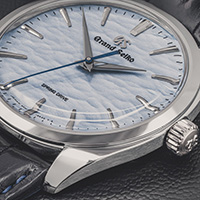Slowing Down Time With MeisterSinger Watches
The German watch brand that’s cohesively epitomising how mechanical watchmaking maintains its place in the 21st century.
Despite almost every non-watch person trying to tell me otherwise, there are near-endlessly exciting and innovative ways watch brands portray time.
I've been working in watches full time since 2016, and although that doesn't hold a flame to the Jean Claude Bivers of this world, it's long enough to have devised plenty of go-to methods of justifying not only what my job is but also the industry as a whole (you're welcome, watches). It sometimes feels like fighting a losing battle, but there are a few ways I approach this. Firstly I'll talk my way through how we look to watches as vehicles for self-expression of style or what we appreciate and value rather than solely for their functionality. Regardless of being obsolete and outdated technology, they connect us with the talented artisans who conceive them and allow us to cosplay freely. The other method is, as my old teachers would appreciate, with working examples. This is where certain brands and models encapsulating the expressiveness and whimsicality of watchmaking come in handy. The Jaeger LeCoultre Reverso, Vacheron Constantin Historiques American 1921, independents such as MB&F, or even complications like minute repeaters and jump hours. These are great for the eclectics of inventive expressions of technical solutions to timekeeping that seems to resonate with non-watch folk in my life. At least, that's what I tell myself.
One contemporary brand that has recently been added to my wheelhouse of rationales is Meistersinger.

A commitment to re-prioritising relationships with time
The device you're using to read these words is pretty fast-paced and all-encompassing, isn't it? If it's not notifications tempting a swipe to refresh or another work email grappling for your attention, we live in a high-speed, accelerated world. Everything moves at 100mph, with time easily able to run away from us. Before you know it, it's Monday morning again, and that holiday you thought was two weeks ago is actually touching six months back. Opportunities to slow down and appreciate exact moments come few and far between, and at the start of the new millennium, this notion didn't sit well with watch industry vet Manfred Brassler, who wanted to provide an alternative to our fast-paced culture. The solution he landed on was to create watches that encourage a slower, more contemplative relationship with time. To do this, Brassler boldly decided for his new venture to play with the concept of having only a singular, slow-moving hand for timekeeping. Ironically, though Brassler was considering present-day relationships to time, the idea of single-handed time-telling dates back to the 14th century, when this was adopted for some of the earliest mechanical clocks.
"My vision was to create a watch brand that goes back to the very beginnings of watchmaking. Watches that reflect not only the precision, but also the aesthetics and fascinating charisma of early measuring instruments: timepieces of unparalleled clarity and simplicity. Furthermore, they should be made with only one single hand – just like all watches and clocks right up to the 18th century – concentrating on the essentials in the design – a relaxed approach to displaying the time." – Manfred Brassler.
Some seven centuries later, Meistersinger expertly re-imagined the idea for the wrist, creating a rich range of models that stem from the tenets of slowing down and perceiving the passage of time more leisurely. There's a mighty strong brand identity around this, presenting something compellingly individual that surprisingly doesn't lack heaps of functionality.
But this brand is more than just a single central hand, with a multi-faceted range of styles from sporty to dressy, traditional to contemporary. There's a plethora of dial nuances, thematic expressions, and even the odd complication up its sleeve as well. Starting from around £1,000, this German watch brand pitches its offerings at an attractive albeit competitive price point.
How do you slow down time?
There's a rather fundamentally crucial factor to clear up right off the bat: how do you actually tell the time with only one hand? Well, although it looks somewhat puzzling at first, it's pretty straightforward. At the very least, the dials on Meistersinger watches feature 01 through 12 indications, just like standard analogue watches. However, rather than each marker between those numbers representing just one minute/second, they denote units of five minutes. With eleven markers between each numeral instead of four, that singular hand handles minutes and hours all in one go – neat, right? The real-world impact of this is that it allows wearers to focus on the passing of time more leisurely and reflectively.
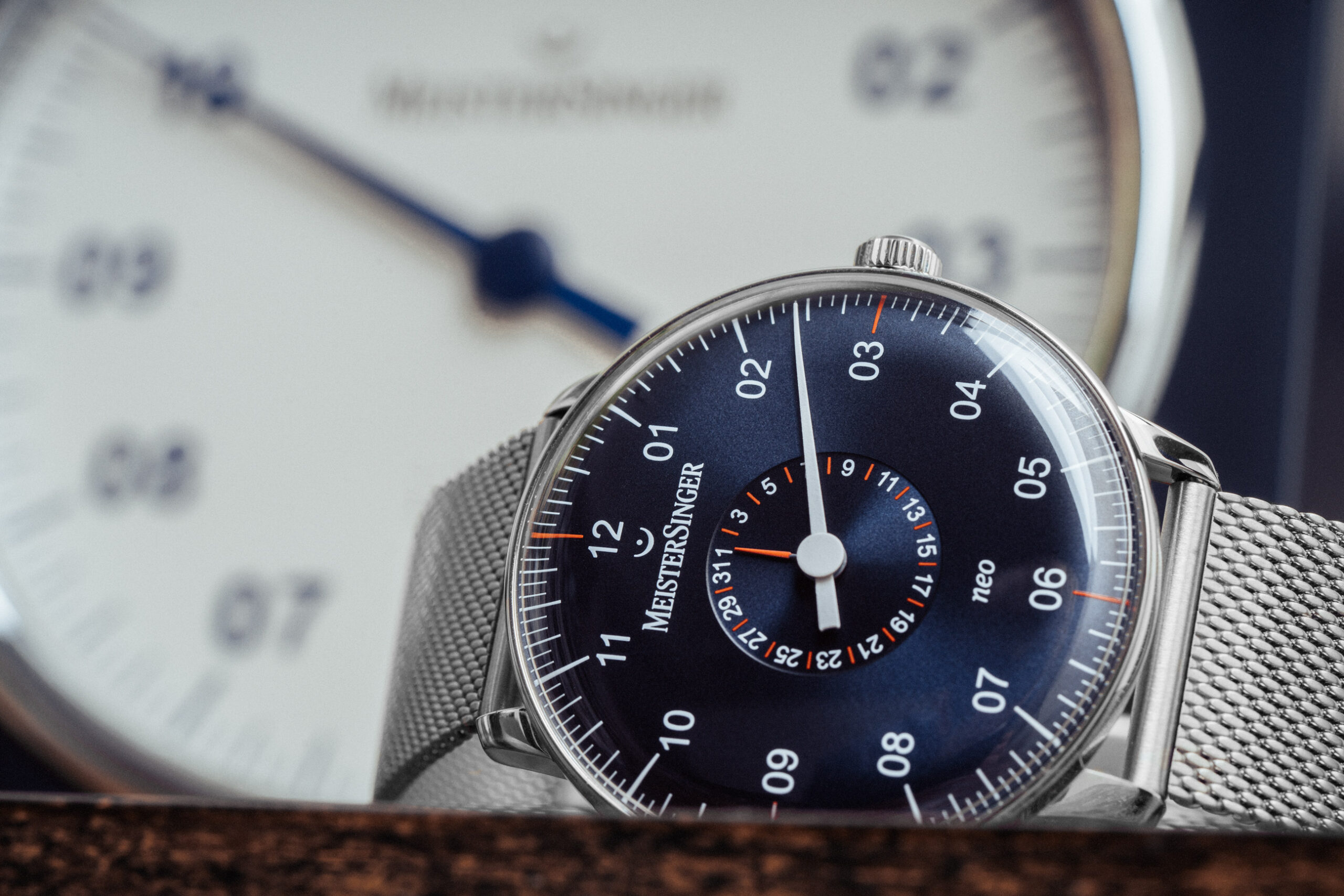
Meistersinger utilises highly capable movements, usually based on ETA or Sellita mechanisms that the brand's watchmakers modify. MeisterSinger also offers three different in-house mechanical movements: the MSH01, MSH02, and MSA01, with the first being a manual wind calibre, the second adding a power reserve indicator, and the third being an automatic calibre. Where these movements differ from their more conventional ébauche counterparts is within their range of finishing techniques, double barrel setups for five days of autonomy, and additional freedom of movement architecture to offer extra individuality. Surprisingly though, watches fitted with these calibres are not priced as highly as one might assume, with prices sub £5,000.
The Meistersinger Classic
After hearing its name, it likely won't come as a surprise to learn that the Classic line from Meistersinger accommodates traditionally imagined expressions from the brand. Here is where emblematic models reside, including no less than the first model the brand produced, aptly named the No.1. Although my use of 'traditionally imagined' is more referring to the brand's proprietary take on tradition, as the range isn't overly heritage heavy nor is it outright modern. Instead, it conveys the brand's own identity, one which straddles the borders, resulting in an attractive and remarkably versatile style. That's not to say you won't find examples at both ends of the spectrum, with pieces such as the Classic No.3 DM903C with its ivory dial and blued hand sitting firmly adjacent to the No.1 AM3308 which favours a sunburst blue dial with white dial accents for a sharp modern appearance.
Typically measuring between 40mm and 43mm, the Classic series also has wearability in its corner, making for a cracking place to find a Meistersinger for daily wear.
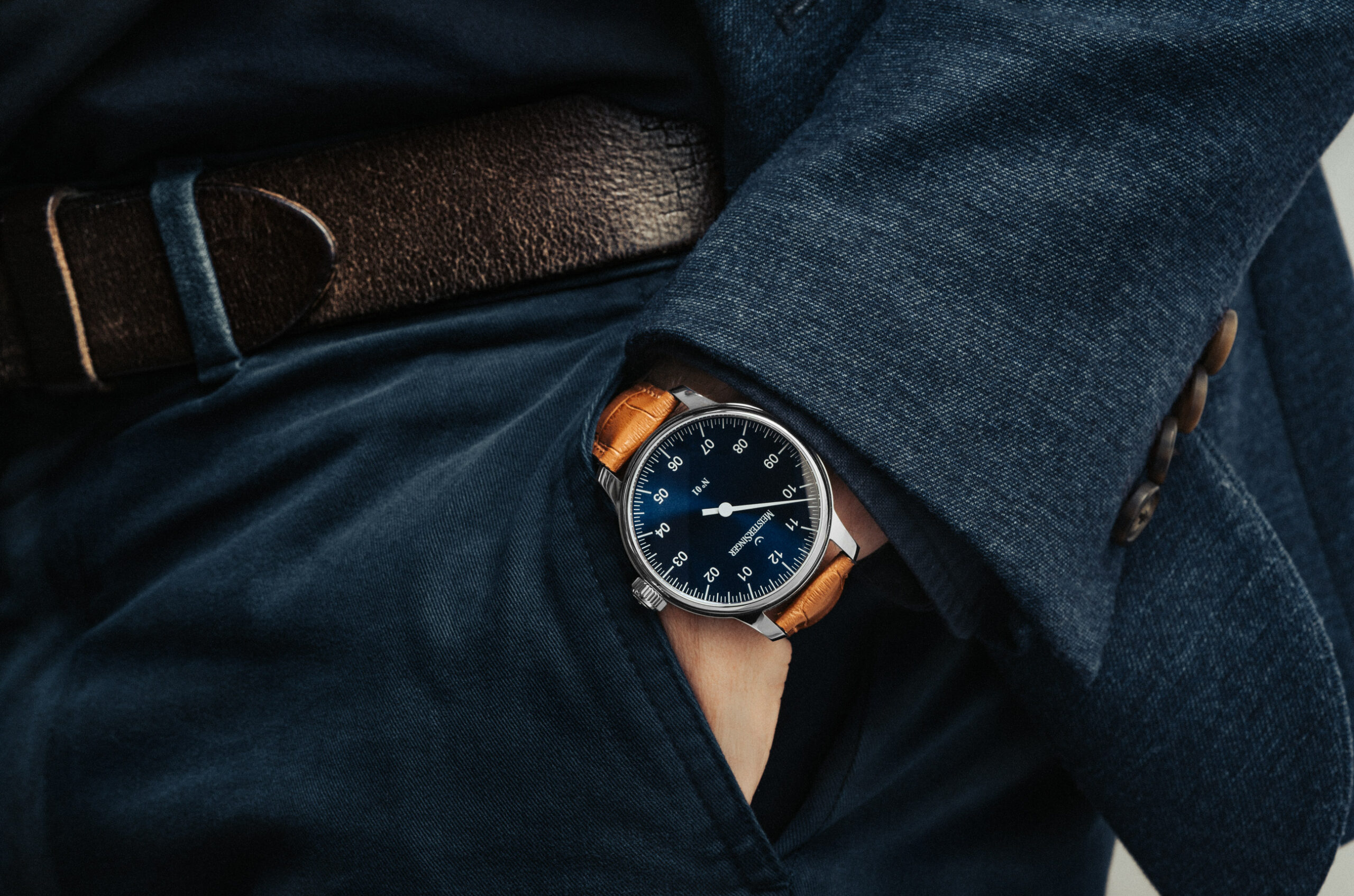
The Meistersinger Classic Plus
Once again, Meistersinger takes the cake for really nailing their collection names on the head, with the Classic Plus continuing where the Classic left off. In fact, just referring to this as a 'Plus' variation is somewhat of a disservice to its offering, as models such as the Astroscope demonstrates. This calendar watch is essentially a day date model, with a date at six and the symbols for the celestial bodies the days of the week are named after in most Western European languages. Also worthy of note is the Perigraph, a 43mm stainless steel piece that excels due to its centred date ring that clicks over once the hand has finished its final second journey around the dial.
Astroscope aside, for the most part, the Classic Plus series is home to various ways of displaying the date from windows to rings, dial textures and depths, and bold colours such as a teal green seen on the Unomat. There's even the appearance of a bracelet (also the Unomat). Meistersinger went so far as to add another hand in the case of the Primatic New, but naturally, it's not related to the timekeeping but a power reserve indicator—a practical and familiarly paced feature for a watch where everything else is running at its own speed.
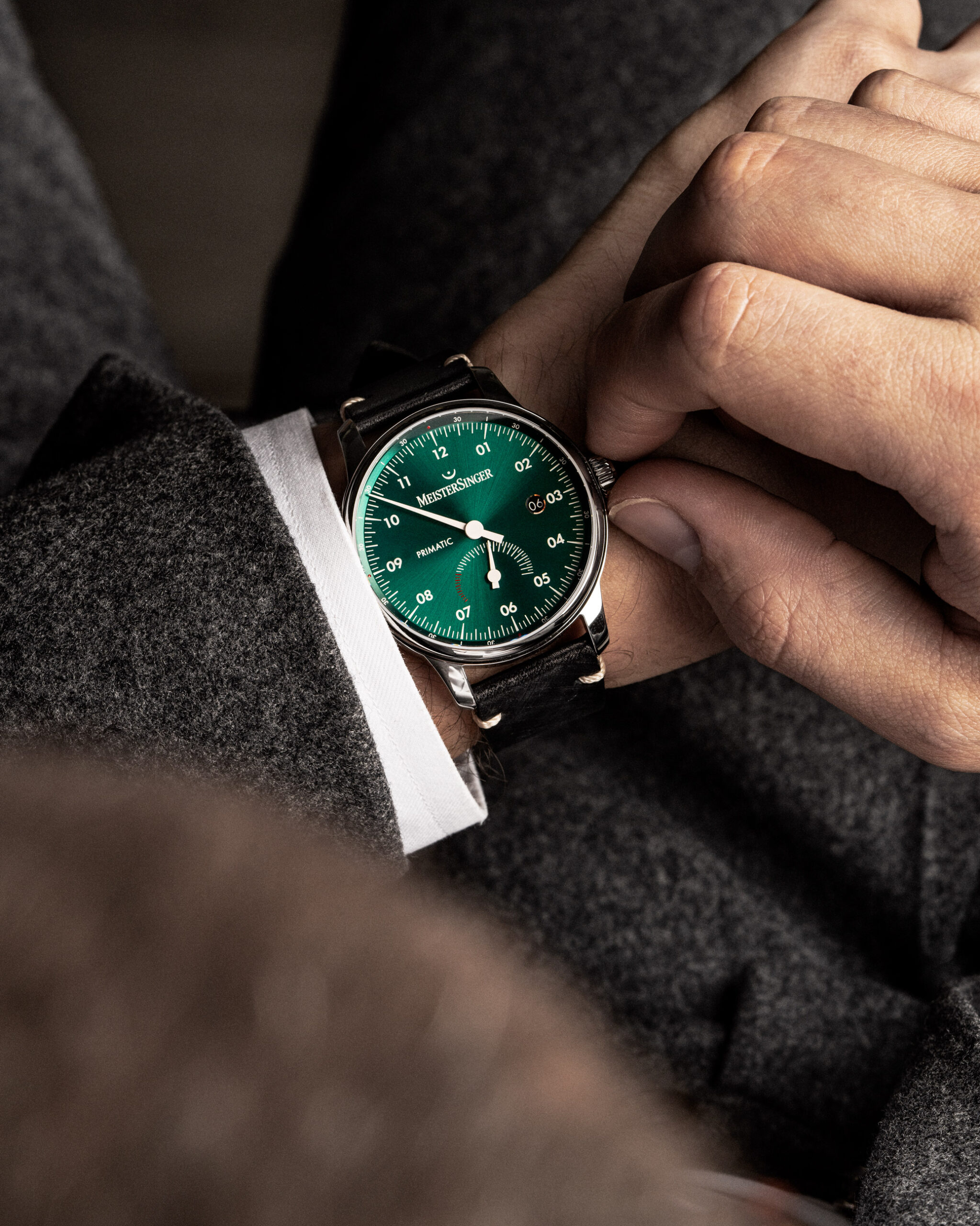
The Meistersinger New Vintage
Once more, Meistersinger knocked it out of the park on the name front, as the New Vintage collection compromises pieces that feel more retro than conventional vintage. Expect to find more understated dial colours alongside the occasional evolution in case form (see pieces such as the Metris with its cushion/tonneau-esque form). Design influences are more rooted in mid 20th century onwards here rather than the ornate sensibility of some of the Classic models with a brilliant range of sizes available, we're talking starting at 36mm up to 40mm. Case in point, remember the Perigraph that lives within the Classic Plus lineup? Well, the Neo Plus Pointer Date is a similar concept, yet a second-hand points to the centralised date rather than a date ring doing the work. That notable technical nuance aside, stylistically, the Neo Plus is remarkably distinctive; dare I say it, even hinting at Bauhaus.
Discover the MeisterSinger collection here.
 Basket
Basket

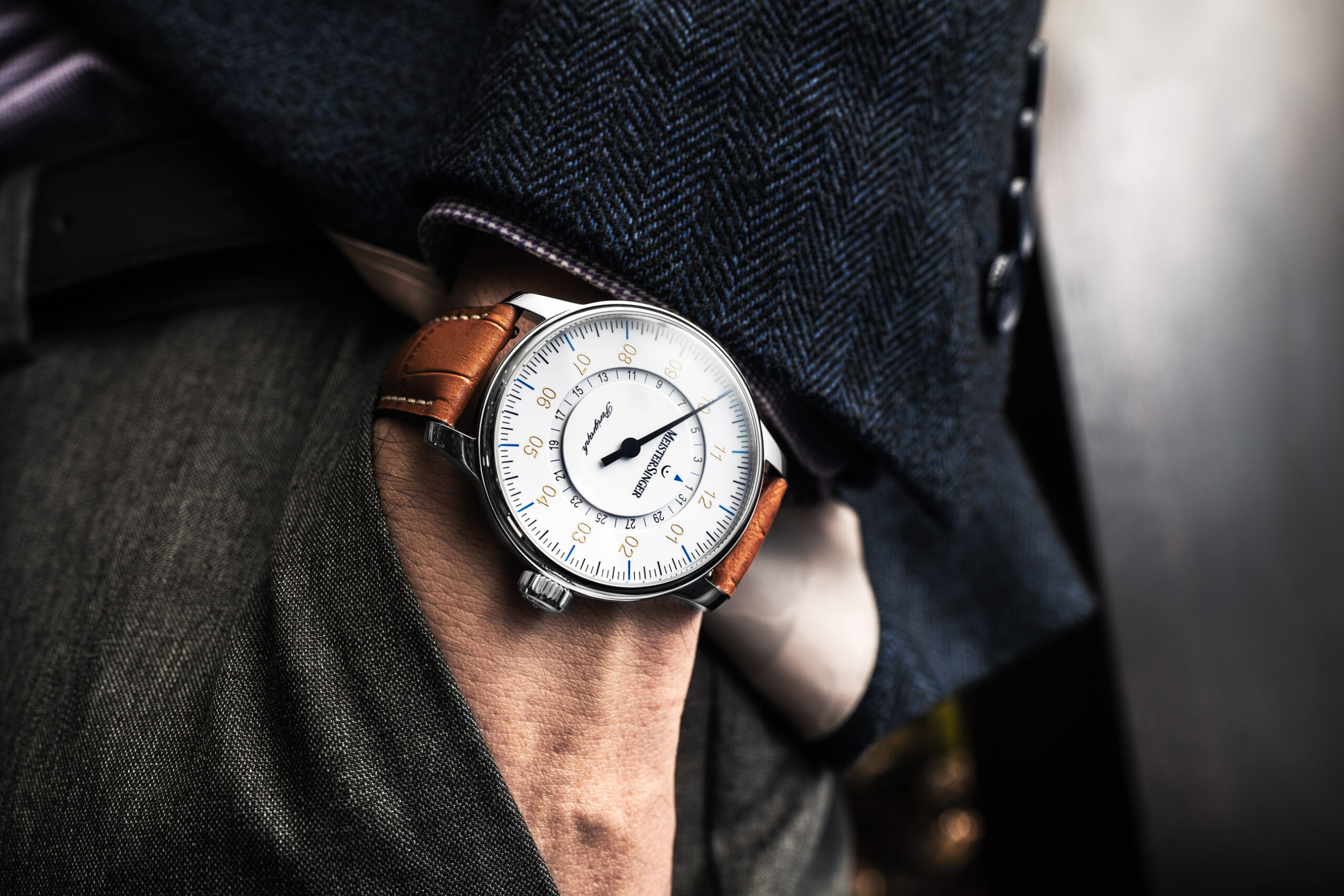


 Back to top
Back to top 0141 221 5855
0141 221 5855 Send us an email
Send us an email






 Secure payment methods
Secure payment methods






